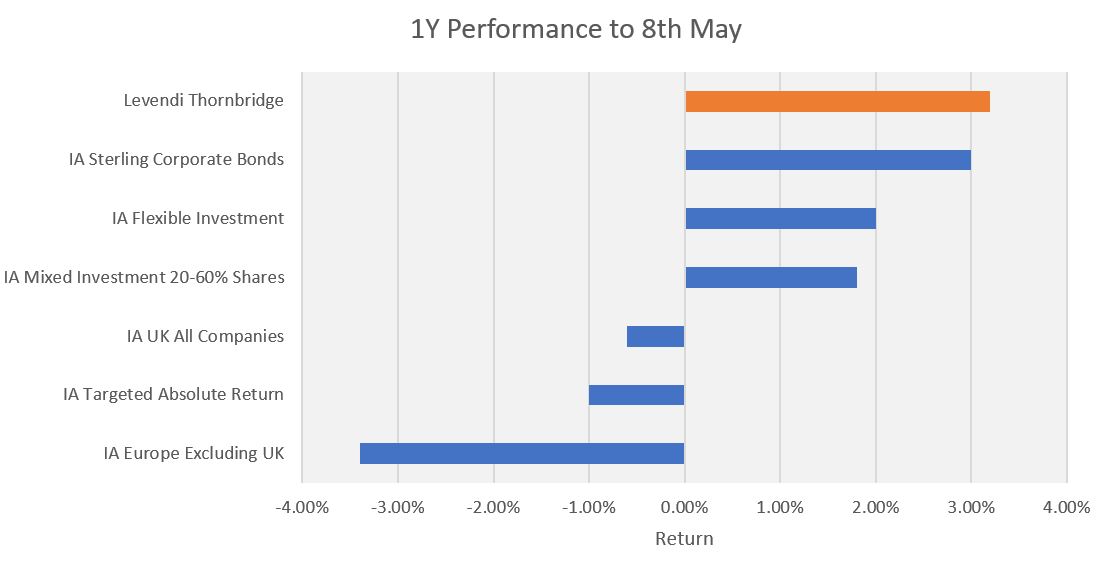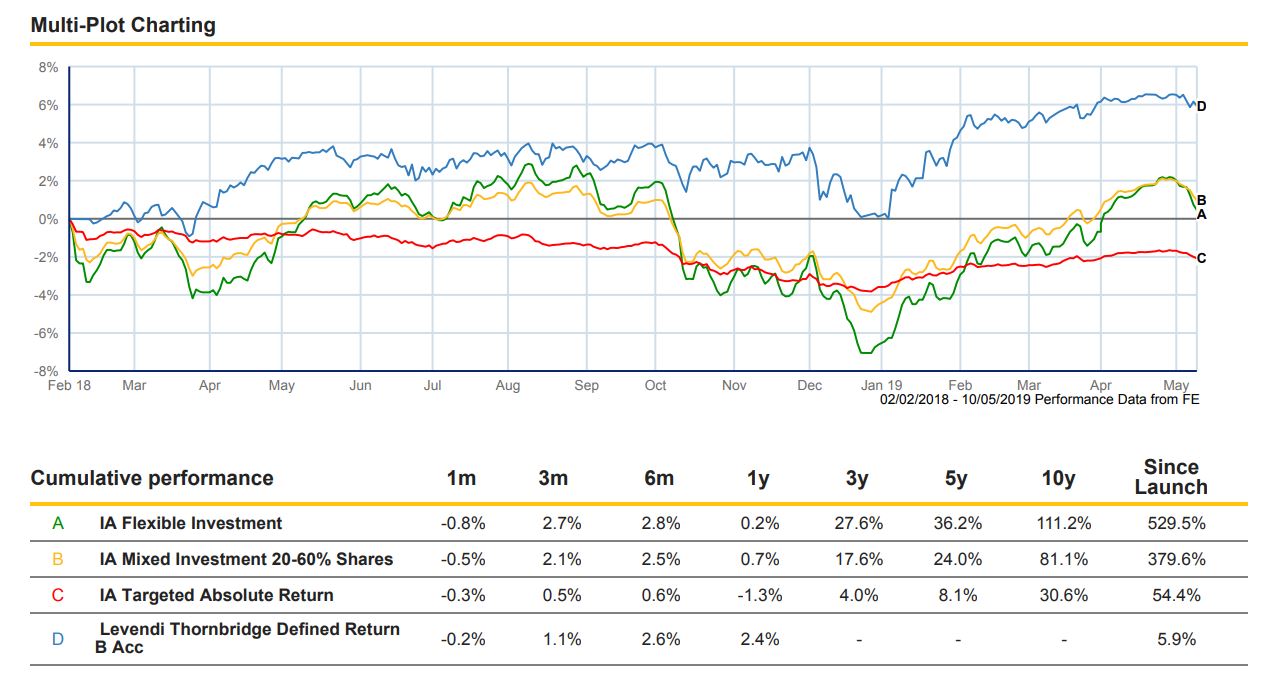Levendi; categorisation and ranking one year performance
Categorisation of funds is very important. Advisers, portfolio managers and manager selection experts need to be able to compare a fund with a similar peer group. The Investment Association offers various fund categories that can be used to categorise funds. Fund listing sites like Trustnet, Morningstar and Citywire add funds to the categories they use.
Funds that use structured products like the Levendi Thornbridge Defined Return Fund (the Levendi Fund) are part of a rapidly growing sector, but these funds can be hard to categorise. As a result, the peer group we think we are part of are scattered over multiple sectors. This can mean that the Levendi Fund may be overlooked by fund managers and advisers.
In this note we propose that our fund may be categorised as either defensive equity or as an Absolute Return fund. We then compare the performance of the Fund over the last twelve months and since inception.
CLASSIFICATION
The Levendi Fund has generally been categorised as “Flexible Investment” by the fund listing sites. This is a catch-all bucket for a wide range of funds. The nature of the strategy used by the Fund means that the Fund could and should be allocated to a more specific sector. Using the Investment Association definitions, the Levendi Fund can be categorised as any of the following;
- Mixed Investment 20-60% Shares or
- Targeted Absolute Return or as
- Flexible Investment
Below we chart the Fund’s performance against the three sectors we can feasibly compare ourselves to. We do not need to add much here. We have comfortably outperformed all three sectors since inception with lower volatility.
RANKINGS
The Levendi Thornbridge Defined Return Fund “B” Shares were launched on the 31st January 2018. With a full year track record, we can see how the Fund performance compares with the return of other funds over the same period. It is possible to see where the Fund would rank if it were included in the other sectors where it could be categorised.
The chart below illustrates where the Fund would rank compared to sector averages from Trustnet.

CONCLUSIONS
The result here is very consistent.
Typically, the only funds which have offered a better return are those that have had a very specialist investment strategy and/or those that have had non-GBP assets and therefore have benefited from GBP depreciation.
We are comfortable with the Fund being used as Mixed Investment 20-60% Shares or as Targeted Absolute Return. The high correlation with equity markets means that although it may be seen as an “alternative”, an investor should be conscious that it will not offer much by way of diversification benefits.
SECTOR DEFINITIONS
Mixed Investment 20-60% Shares
The fund can be thought of as a mix of equities and short dated bonds. The fund maintains some exposure to equity markets. The exposure to equity markets is usually between 30% and 40% on a day to day basis.
Reason to invest; Compared to other investments in this sector, the fund benefits from the ability to generate positive returns that do not rely on rising markets or falling yields.
The Levendi Fund will be fully invested but will maintain an effective exposure of between 20% and 60% to equity markets.
Targeted Absolute Return
The assets held by the fund offer a defined payoff that will be received if certain defined conditions are met. The fund can be considered as an absolute return strategy. The investment process used by the fund, and the conditions required for the fund to achieve the targeted return are clear and transparent.
Reason to invest; the fund has a clear, simple investment strategy. The conditions required for the fund to generate a positive return are easy to explain and understand. The fund relies on a factor (the Equity Insurance Premium) It is caused by regulatory, economic and behavioural factors that mean it is a that is stable, persistent.
STERLING CORPORATE BONDS
The fund can be considered as a replacement for corporate bonds. The assets that the fund holds are like corporate bonds in that they offer higher than risk-free return but are exposed to some risk. Compared with corporate bonds the risk that the issuer defaults is replaced by the risk that equity markets fall significantly over a protracted period.
Reason to invest; higher positive carry, no requirement for falling rates for positive returns, replace issuer default risk with equity market risk.
[1] https://www.theinvestmentassociation.org/fund-sectors/sector-definitions.html#undefined
[2] See above for the definitions of each sector taken from the IA website.

